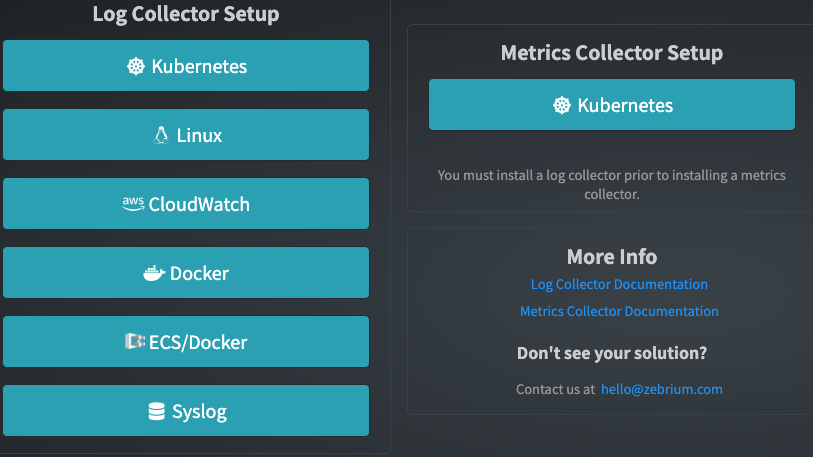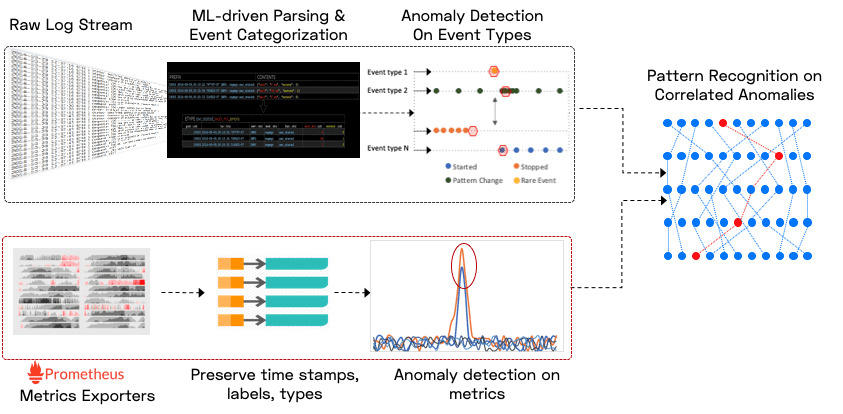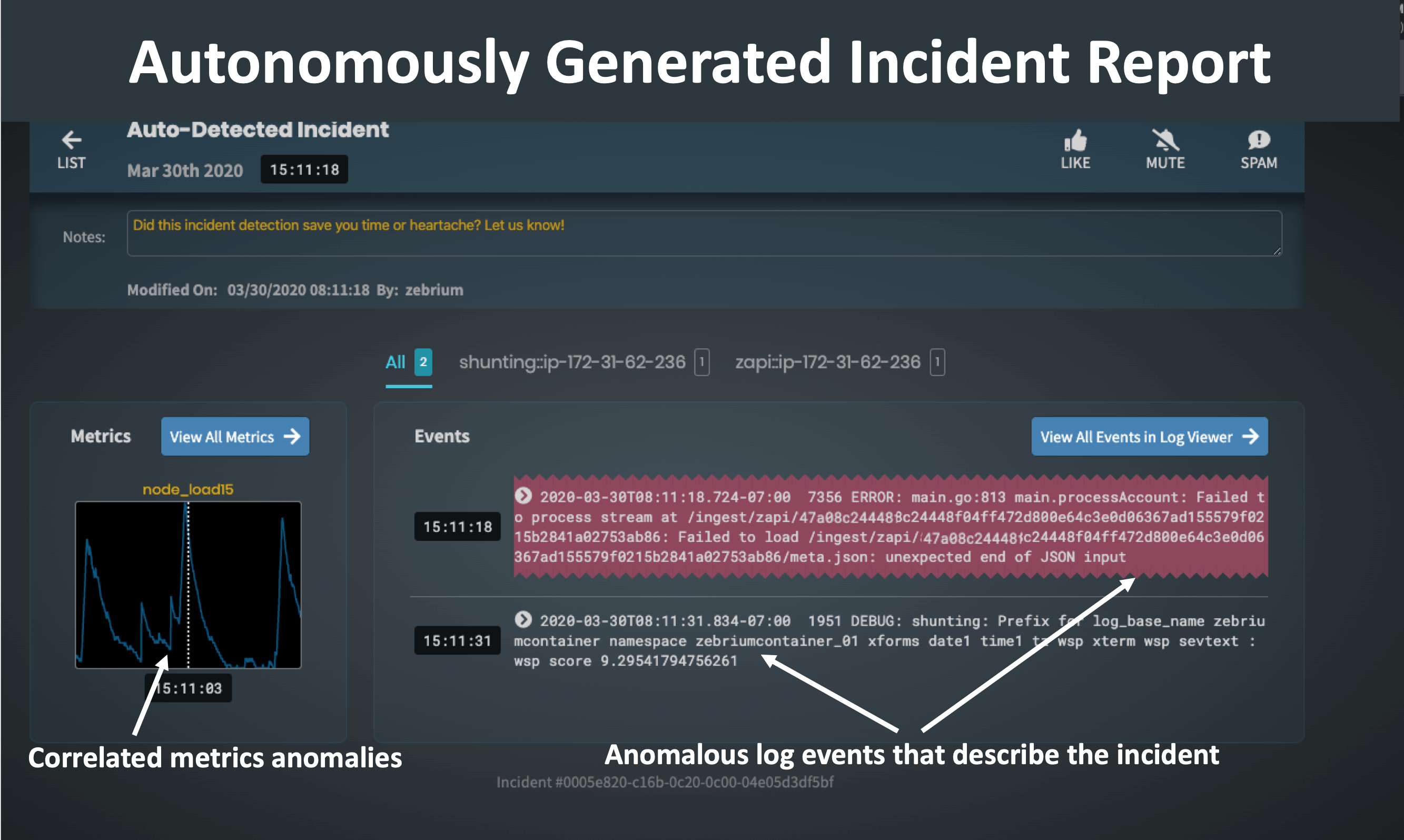We're thrilled to announce that Zebrium has been acquired by ScienceLogic!
Learn MoreWe're thrilled to announce that Zebrium has been acquired by ScienceLogic!
Learn More
Logs go In, Root Cause Come Out
Start by installing one of our supported log collectors. No parsers, code changes, rules or special log formats are needed. Then let our Machine Learning (ML) take over!
Within minutes, our ML learns the structures of your logs, and categorizes each event into a “dictionary” of unique event types. Categorization is crucial for accurate pattern learning of your logs.


Within the first hour, the patterns of each type of log event is learnt (and the learning continues to improve with more data).
Log event pattern changes are scored as to how "anomalous" they are, but these anomalies tend to be very noisy. So, in order to separate signal from noise, the ML then looks for hotspots of abnormally correlated anomalies across the different log streams.

The hotspots detected above are packaged into concise root cause reports that contain root cause indicators and symptoms found in the logs.
A plain language summary of the report is also created using Generative AI.
The entire process is completely autonomous - without requiring manual configuration, training or large data sets.
Privacy Policy Terms of Service Cookie Settings © 2022 by Zebrium, Inc.